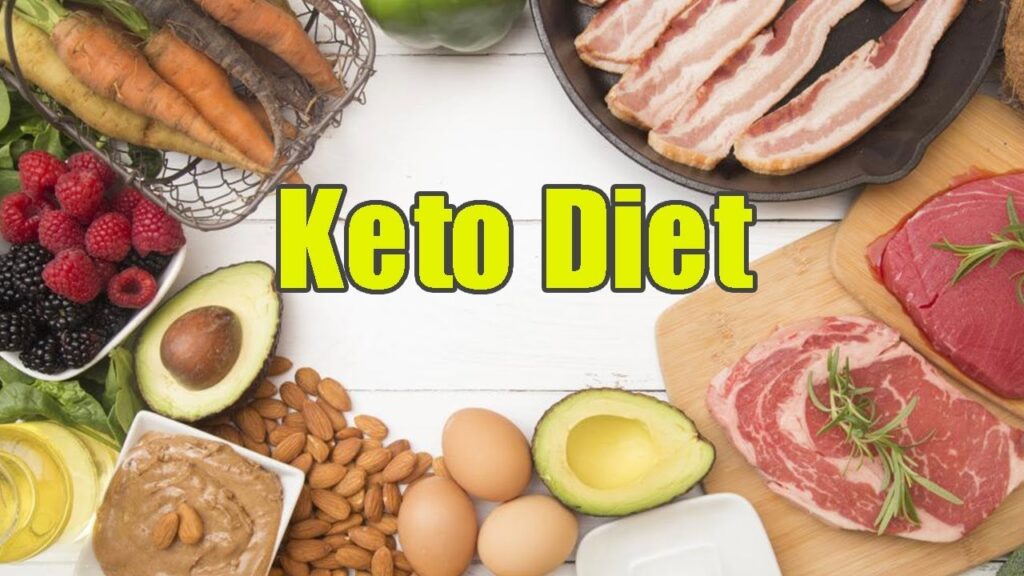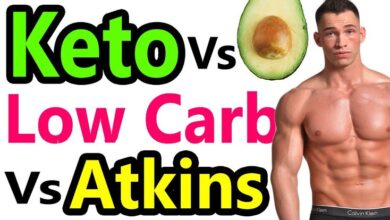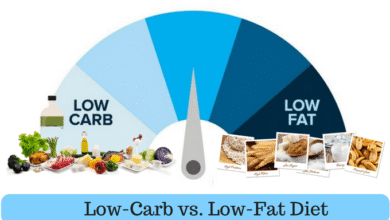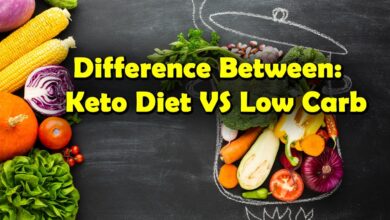
How to Follow a Low-Carb Keto Meal Plan Effectively
Introduction to the Keto Diet
If you’re looking for a way to lose weight, boost energy, and improve mental clarity, you might have heard of the keto diet. This low-carb, high-fat eating plan has gained immense popularity for its effectiveness in promoting fat loss. But what exactly is the keto diet, and why are so many people turning to it? In simple terms, the low-carb keto meal plan is designed to put your body into a state of ketosis, where it burns fat for fuel instead of carbohydrates. In this article, we’ll guide you through how to follow a low-carb keto meal plan effectively.
A low-carb keto meal plan focuses on reducing carbohydrate intake while increasing fat consumption. This drastic reduction in carbs leads to the body relying on fat as the primary energy source, a process known as ketosis. As you follow a low-carb keto meal plan, your body adapts by producing ketones, which are derived from fat. This transition can lead to significant weight loss, higher energy levels, and improved brain function.
Read Also “Ultimate Keto Meal Plan for Beginners: Your 7-Day Guide to Fast Weight Loss and Increased Energy”
Understanding the Science Behind the Keto Diet
Before diving into meal plans and food lists, it’s important to understand how the low-carb keto meal plan works. The goal is to drastically reduce carbohydrate intake and replace it with healthy fats. This forces the body to switch its energy source from glucose (sugar) to ketones, which are produced by breaking down fats.
How Does the Keto Diet Work?
The low-carb keto meal plan works by restricting carbohydrates to around 20-50 grams per day. With fewer carbs, your body no longer has an abundant supply of glucose (sugar) to burn for energy. In response, the liver begins to break down fats into ketones, which serve as an alternative fuel source. This process is called ketosis, and it’s at the heart of the low-carb keto meal plan’s effectiveness.
Ketosis: The Key to Success
The key to success on the low-carb keto meal plan is staying in ketosis. When you’re in ketosis, your body is burning fat for energy instead of carbohydrates. This not only aids in weight loss but also provides consistent energy levels throughout the day, making it easier to stay active and productive.
Low-Carb vs. High-Carb Diets: What’s the Difference?
The primary difference between a low-carb keto meal plan and a high-carb diet is the way the body processes energy. In a high-carb diet, glucose is the primary source of energy, which is quickly converted from the carbs consumed. In contrast, the low-carb keto meal plan shifts the body to burning fat for fuel, leading to more sustainable energy, better weight management, and mental clarity.
The Basics of a Low-Carb Keto Meal Plan
The key to a successful low-carb keto meal plan is knowing what foods to eat and, more importantly, what foods to avoid. You’ll want to load up on healthy fats, moderate your protein intake, and significantly reduce carbs.
What to Eat on a Low-Carb Keto Diet
The foods you choose on the low-carb keto meal plan should focus on healthy fats, moderate amounts of protein, and minimal carbs. This combination allows your body to enter ketosis and burn fat effectively.
Healthy Fats:
These should be your primary energy source. Healthy fats such as avocado, olive oil, coconut oil, butter, and fatty cuts of meat are essential components of the low-carb keto meal plan. They provide the necessary fats for ketosis while keeping you satisfied throughout the day.
Proteins:
Moderate protein intake is key in the low-carb keto meal plan. This includes sources like eggs, grass-fed beef, chicken, turkey, and fatty fish like salmon. Overconsumption of protein may hinder ketosis, so balancing protein intake is essential.
Low-Carb Vegetables:
Veggies like spinach, kale, zucchini, cucumbers, and broccoli are great options for the low-carb keto meal plan. These vegetables are low in carbohydrates but packed with nutrients and fiber, making them an essential part of your meals.
Full-Fat Dairy:
Cheese, heavy cream, and butter are excellent for maintaining the high-fat component of the low-carb keto meal plan. They help with fat intake while keeping meals delicious and satisfying.
Foods to Avoid on a Low-Carb Keto Meal Plan
While the low-carb keto meal plan emphasizes healthy fats, it’s equally important to avoid certain foods that can derail your progress. These foods are high in carbs and can prevent your body from entering or staying in ketosis.
Grains:
Foods like rice, pasta, and bread are off-limits. These grains are high in carbohydrates and can kick you out of ketosis. Instead, opt for low-carb vegetables and legumes.
Starches:
Starchy vegetables such as potatoes and corn should be avoided on the low-carb keto meal plan. These foods are high in carbs and can easily hinder your ketosis.
Sugary Foods:
Candies, sweets, and sugary drinks are major sources of glucose, which can prevent your body from burning fat efficiently. Stick to natural sweeteners like stevia if you need a sugar substitute.
Processed Foods:
Avoid processed foods, which often contain hidden sugars and carbs. Always read labels carefully when following the low-carb keto meal plan to ensure you’re consuming only clean, whole foods.
Starting Your Keto Journey: The First Steps
Making the transition into a low-carb keto meal plan can feel like a big change, but it’s worth it. The first step is preparation.
Preparing for the Keto Diet
Preparation is key to starting the low-carb keto meal plan successfully. Begin by clearing your kitchen of high-carb foods that might tempt you. Stock up on healthy fats, protein, and low-carb vegetables so you have everything you need at hand.
How to Transition into Ketosis
Transitioning into ketosis is one of the most crucial phases of the low-carb keto meal plan. It typically takes between two and seven days for your body to enter ketosis, depending on your individual metabolism. During this time, you may experience symptoms known as the “keto flu,” which can include fatigue, headaches, and irritability. Staying hydrated and replenishing your electrolytes can help mitigate these symptoms.
Understanding the Keto Flu and How to Avoid It
The keto flu is a set of symptoms that can occur when you first start the low-carb keto meal plan. These symptoms are a result of the body adjusting to burning fat for fuel instead of carbohydrates. To avoid the keto flu, make sure you drink plenty of water, consume enough sodium, magnesium, and potassium, and consider easing into the diet gradually rather than making a sudden switch.
Planning Your Meals for Success
Meal planning is crucial for sticking to a low-carb keto meal plan. By preparing your meals in advance, you’ll ensure that you have keto-friendly options ready at all times.
How to Plan Keto-Friendly Meals
Planning your meals around healthy fats, moderate proteins, and low-carb vegetables is the foundation of the low-carb keto meal plan. Focus on simple meals that don’t require a lot of ingredients or prep time. For instance, a meal of grilled chicken with a side of roasted Brussels sprouts and avocado provides the perfect balance of fats, protein, and fiber.
Quick and Easy Keto Recipes for Beginners

If you’re new to the low-carb keto meal plan, it can be helpful to start with some quick and easy recipes. Try:
- Avocado Egg Boats: Slice an avocado in half, remove the pit, and crack an egg into each half. Bake until the egg is set.
- Zucchini Noodles with Pesto: Use a spiralizer to create zucchini noodles and toss them with a rich, homemade pesto sauce.
Essential Keto-Friendly Foods You Need
When you’re shopping for keto-friendly foods, it’s important to stock up on the essentials that will make meal prep easier.
Healthy Fats to Include
Healthy fats like avocado, coconut oil, and olive oil should be your go-to sources of energy on the low-carb keto meal plan. These fats keep you full and satisfied while providing the necessary fuel for your body to enter and maintain ketosis.
Best Protein Sources for Keto
Choose high-quality protein sources such as grass-fed beef, poultry, and fatty fish like salmon. These protein-rich foods help build and repair tissues while providing the amino acids your body needs.
Avoiding Common Keto Mistakes
One of the most common mistakes people make when following the low-carb keto meal plan is not eating enough fat. Keto is a high-fat, low-carb diet, and without enough fat, you may not enter or stay in ketosis.
Mistakes to Avoid When Starting Keto
Some mistakes people make include consuming too much protein, not drinking enough water, and neglecting to replenish electrolytes. These issues can prevent the body from entering ketosis and lead to discomfort or slower progress.
Overcoming Plateaus on the Keto Diet
If you hit a plateau, it could mean your body has adapted to the low-carb keto meal plan, and it’s no longer burning fat as efficiently. Try increasing your fat intake, reducing protein consumption, or incorporating intermittent fasting to kickstart fat loss again.
Keto-Friendly Snacks and Desserts
Sticking to your low-carb keto meal plan doesn’t mean you have to give up snacks and desserts. There are plenty of low-carb options to satisfy your cravings.
Best Keto Snacks
Some of the best snacks for the low-carb keto meal plan include cheese, nuts, and hard-boiled eggs. These snacks are rich in fat and protein, making them ideal for keeping hunger at bay.
How to Make Keto Desserts That Satisfy Your Sweet Tooth
Keto-friendly desserts are a great way to satisfy your cravings without kicking yourself out of ketosis. Try making keto chocolate mousse with heavy cream and cocoa powder, or whip up coconut flour pancakes topped with sugar-free syrup.
Staying Hydrated and Supplementing on the Keto Diet
On the low-carb keto meal plan, staying hydrated is crucial, as your body tends to lose more water and electrolytes due to reduced carb intake.
Importance of Hydration
Adequate hydration helps prevent the keto flu and ensures that your body has enough fluids to function optimally.
Essential Supplements to Take While on Keto
Some important supplements for the low-carb keto meal plan include magnesium, potassium, and sodium to help maintain electrolyte balance. Additionally, omega-3 fatty acids and vitamin D can support overall health.
How to Track Your Progress on the Keto Diet
Tracking your progress is a great way to stay motivated on your keto journey
Using a Keto Tracker
There are several apps available that allow you to track your macronutrients and monitor your ketosis status. You can also use urine strips or a blood ketone meter to measure your ketone levels and ensure you’re in ketosis.
Conclusion
Following a low-carb keto meal plan is an excellent way to lose weight, boost energy, and improve mental clarity. By focusing on whole, nutrient-dense foods, planning your meals, and staying hydrated, you can achieve success on the keto diet. With time, this diet can become a sustainable lifestyle that helps you maintain your weight and health for the long term.
Frequently Asked Questions
- What Are the Best Low-Carb Keto Foods?
- Some of the best foods include avocados, leafy greens, nuts, and fatty fish like salmon.
- Can I Drink Alcohol on a Keto Diet?
- Yes, but it’s important to stick to low-carb options like dry wine or spirits without sugary mixers.
- How Much Protein Should I Eat on Keto?
- Protein should make up about 20-25% of your total daily caloric intake. The rest should come from fats.
- How Quickly Will I See Results on the Keto Diet?
- Many people start seeing results within the first few weeks, especially in terms of fat loss and energy levels.
- Can I Follow Keto While Traveling?
- Yes, with proper planning, you can find keto-friendly options at most restaurants or bring your own snacks.






2 Comments